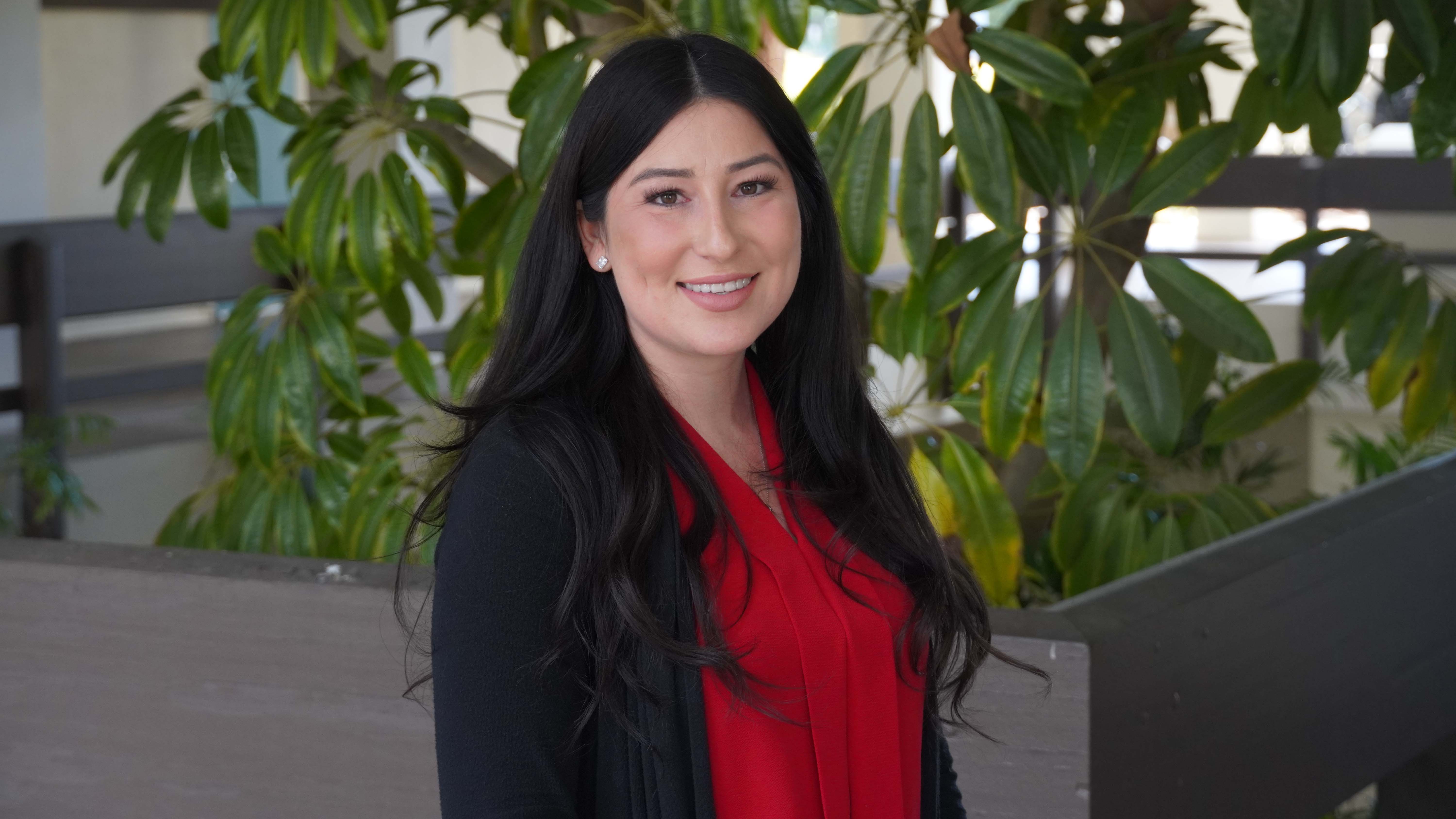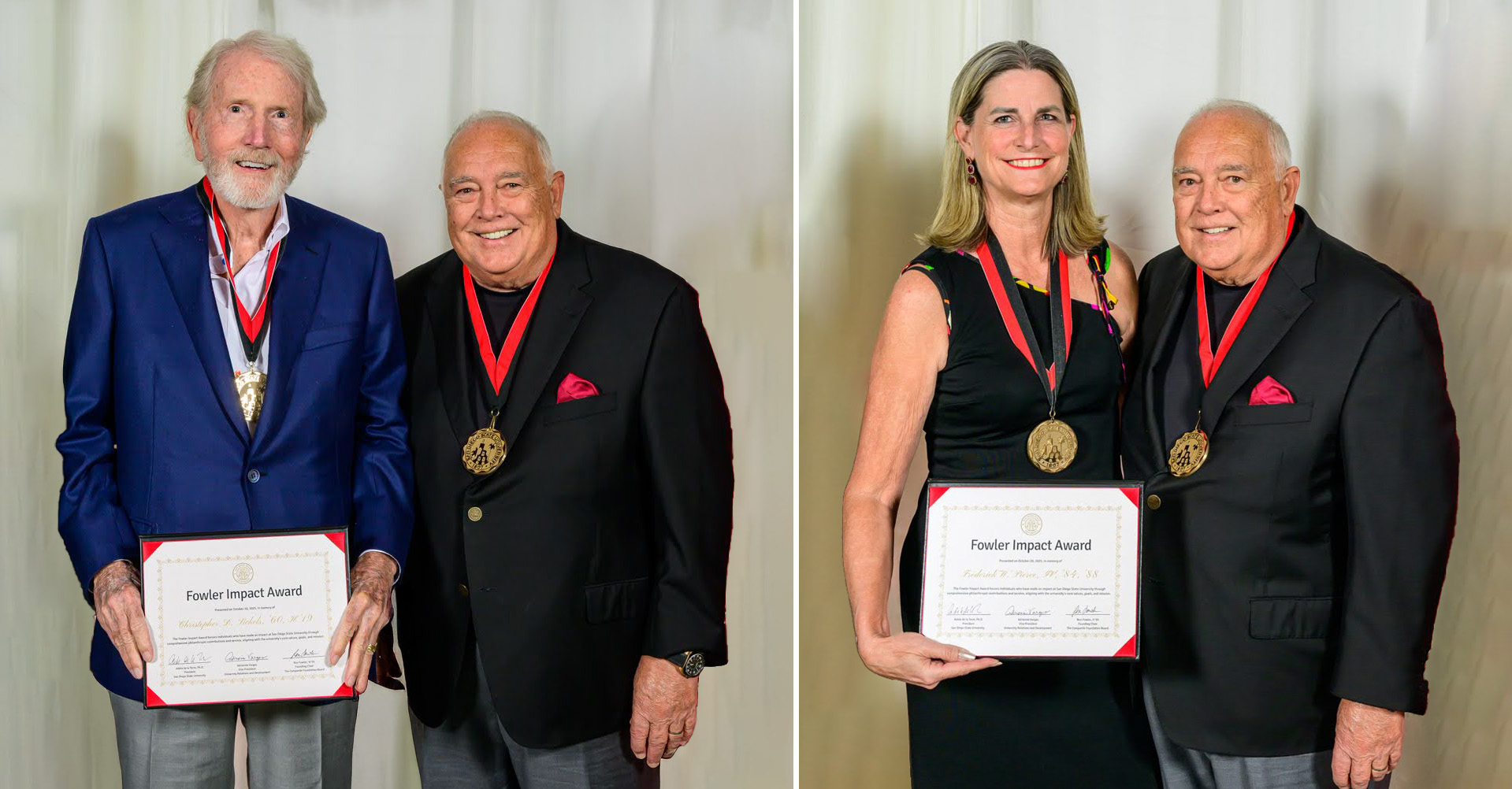SDSU Imperial Valley nursing lecturer certified as expert in field of health care simulation
Andrea Sanchez, nursing skills and simulation coordinator, earned the certification to support hands-on experience for students.

For many SDSU Imperial Valley nursing students, the simulation course, a key component of the nursing program that allows students to practice clinical decision-making in a controlled setting, offers a first look into patient care.
Equipped with virtual reality headsets, students step into lifelike clinical scenarios where a patient faces a critical health crisis, such as cardiac issues, accidents or neurological problems. Students check for vital signs, recall lessons on emergency care and decide how to respond. The experience prepares students to navigate real-world scenarios they will encounter in doctors’ offices and hospital floors.
At SDSU Imperial Valley, Andrea Sanchez, lecturer and nursing skills and simulation coordinator for the university’s School of Nursing, recently earned the Healthcare Simulation Educator Certification from the Society for Simulation in Healthcare. The certification will help her support students’ hands-on experience in the classroom and expand simulation skills within the increasingly popular nursing program, aimed partly at strengthening the health care workforce in Imperial County.
Sanchez earned a bachelor's degree in nursing from SDSU Imperial Valley in 2016. In fall 2022, she returned to her alma mater as a simulation coordinator. In addition to teaching courses, she quickly discovered how powerful simulation could be in bridging the gap between theory and practice.
Simulation courses offer hands-on experience using immersive virtual technology to assess a patient’s health problem, go through a diagnosis and learn how to manage beside care. Faculty then evaluate students’ performance and participate in the debriefing process.
When she first returned in 2022, SDSU Imperial Valley did not offer simulation courses for the Registered Nurse (RN) to bachelor of science in nursing (BSN) program. She has since worked to incorporate nursing simulations into the program.
Today, simulation courses are now a cornerstone of SDSU Imperial Valley’s nursing and lab courses. The program incorporates low-fidelity and high-fidelity scenarios, which involve learning the basics to more complex, advanced simulations, and hands-on demonstrations. These tools give students the opportunity to practice skills in a safe environment where mistakes become learning opportunities before diving into in-person clinical practices.
“Since we launched the simulation courses, our students have asked us to do more simulation exercises since they feel it offers them a safe space to make mistakes and go in with their future patients with more experience,” said Sanchez.
The simulation courses are taken in the final two years of the nursing program. At the start, Sanchez says, students often feel uncertain, but as they engage with these experiences, their confidence grows.
Another activity that supports students’ hands-on experience was the creation of an escape-like room. Designed as a puzzle-based challenge, students use virtual head sets to complete patient care problems in a group setting, similarly to the simulation case. Students are then tasked to complete the series of problems in a sequence to think critically and collaboratively as a team under time pressure, offering an alternative activity to studying traditional case studies.
Sanchez’s extensive background in simulation has allowed her to mentor faculty colleagues in bringing simulation into their own teaching.


